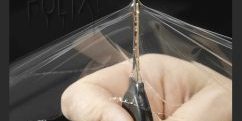Paint protector

The Benefits and Applications of Paint Protection Film
Did you know that you can protect your car's paint from the sun, rock chips, and other environmental hazards?
Today, we'll explain how paint protection films (PPF) work.
If you want to shield your vehicle from the consequences of impacts, insects,
or general contaminants without neglecting the effects of weather (sun, rain, hail, etc.),
using vinyl or protective film is a great solution for the most exposed areas of your car's paint.
What are protective vinyl and films?
Car paint protection film, or paint protection film (PPF),
is an excellent solution to prevent damage caused by gravel, dust, and more to your car's paint.
It acts as a barrier within the car's paint, providing protection against external wear and tear.
The result is an invisible shield that prevents damage to the car's finish.
The benefits of protective films:
As we usually say, car paint protection films are made from polyurethane, a polymer with unique properties:
lightweight and flexible yet resistant to impact, abrasion, and corrosion.
Moreover, it is completely transparent and almost unnoticeable.
The only thing visible after installation is the increased brilliance of the paint.
Furthermore, since it uses acrylic adhesive, its flexibility is maximized,
making it suitable for application on various surfaces,
be it the hood, bumpers, or even side mirrors, headlights,
and other specialized surfaces prone to external aggressions.
It's worth noting that this is a highly durable material,
and some models have self-healing or self-regenerating properties,
meaning that minor scratches disappear within moments.
They can be removed at any time without leaving a trace and without damaging the original paint.
Due to their advantages, protective films are highly beneficial for 4x4 vehicles.
It's very common for these vehicles to get scratched by branches, rocks, and pebbles,
so covering the exposed areas helps prevent the appearance of unsightly scratches.
